This little port is a familiar tree in many of my past Facebook posts. Yet, in such a short time, I was able to develop this tree’s branch structure within two years and move straight into refinement.
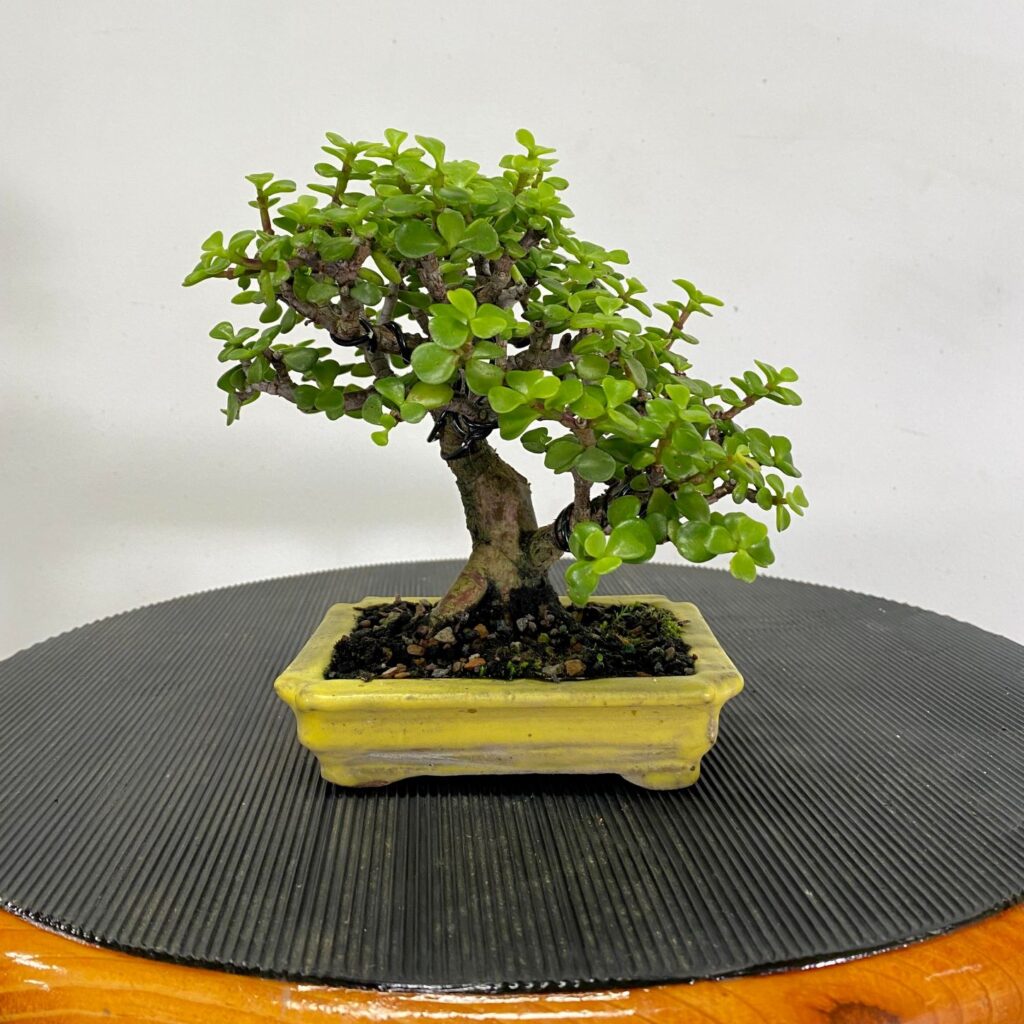
I noticed just the other day that an excessive amount of moss and algae had begun to accumulate on the soil surface of the tree. There’s a tab bit of yellowing on the fleshy little leaves, which are beginning to match the color of the pot too much for my taste. This tells me that it’s time to check and see if the tree needs repotting.
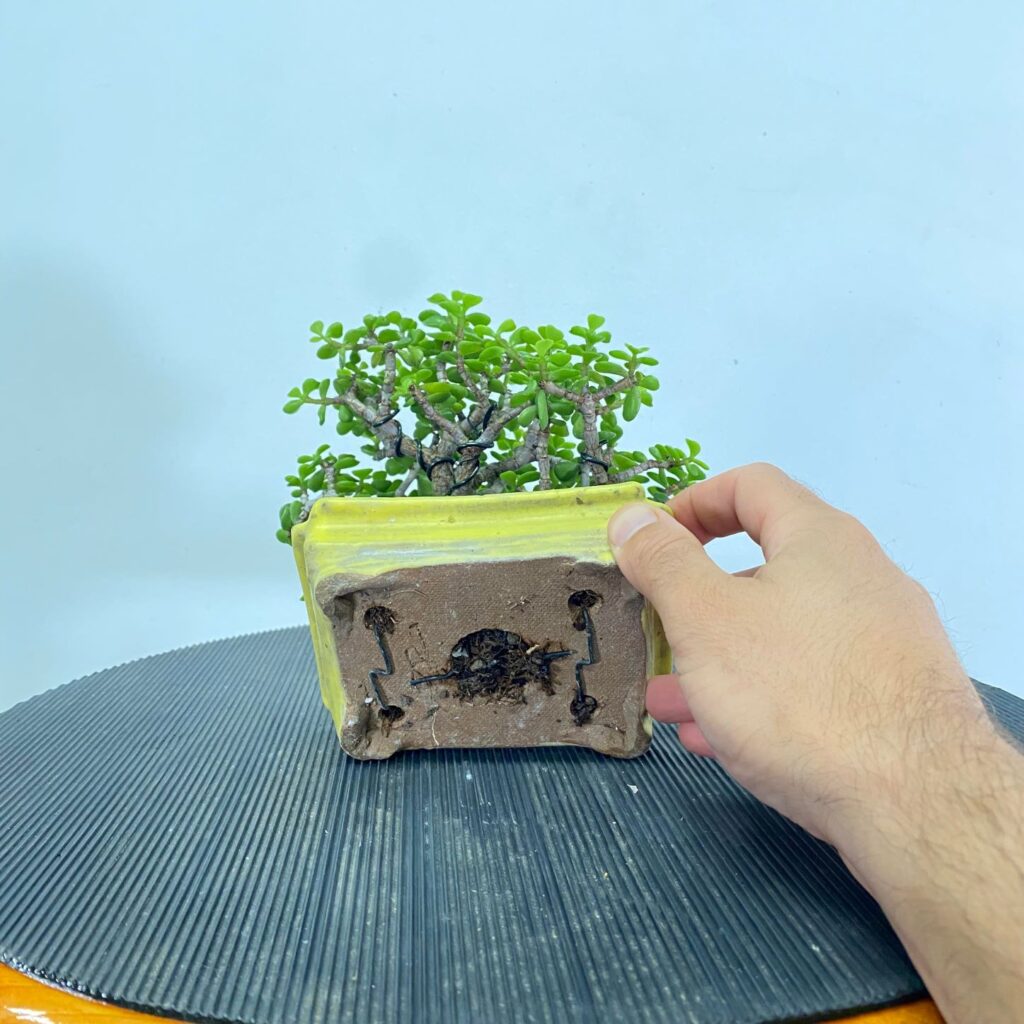
If you look closely at the holes of the container, you can see the fine feeder roots searching for more resources. This is one of the simplest ways to tell a tree has filled out every nook and cranny of its container. The next step is to shoehorn the little tree out of the pot and see what the state of the root system is in. What a fine piece of pottery, too, I made it, of course, the last time Byron Myrick was in town for a build-your-own pot workshop at the nursery.
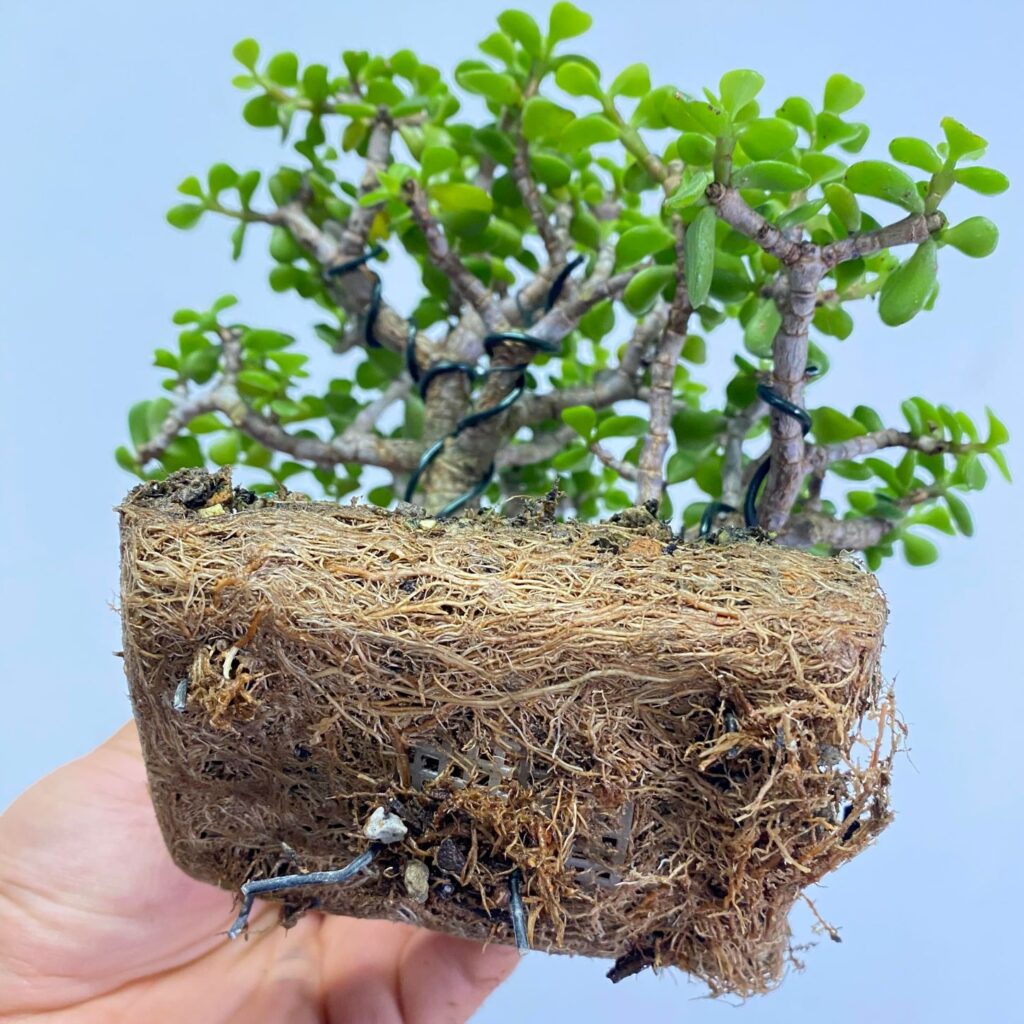
This is precisely what I was hoping to see when I slid the tree out of the pot. The tree has nice, even, dense roots around the interior and exterior of the root structure. This explains why the moss was growing on the soil surface, and the water percolation was so low. There are no signs of root rot or disease, so that tells me it’s time for some simple maintenance root trimming.
On a side note, if you want to check a root system for issues, you can lift the tree out of its container and take a peek, as long as you put it back afterward, of course.
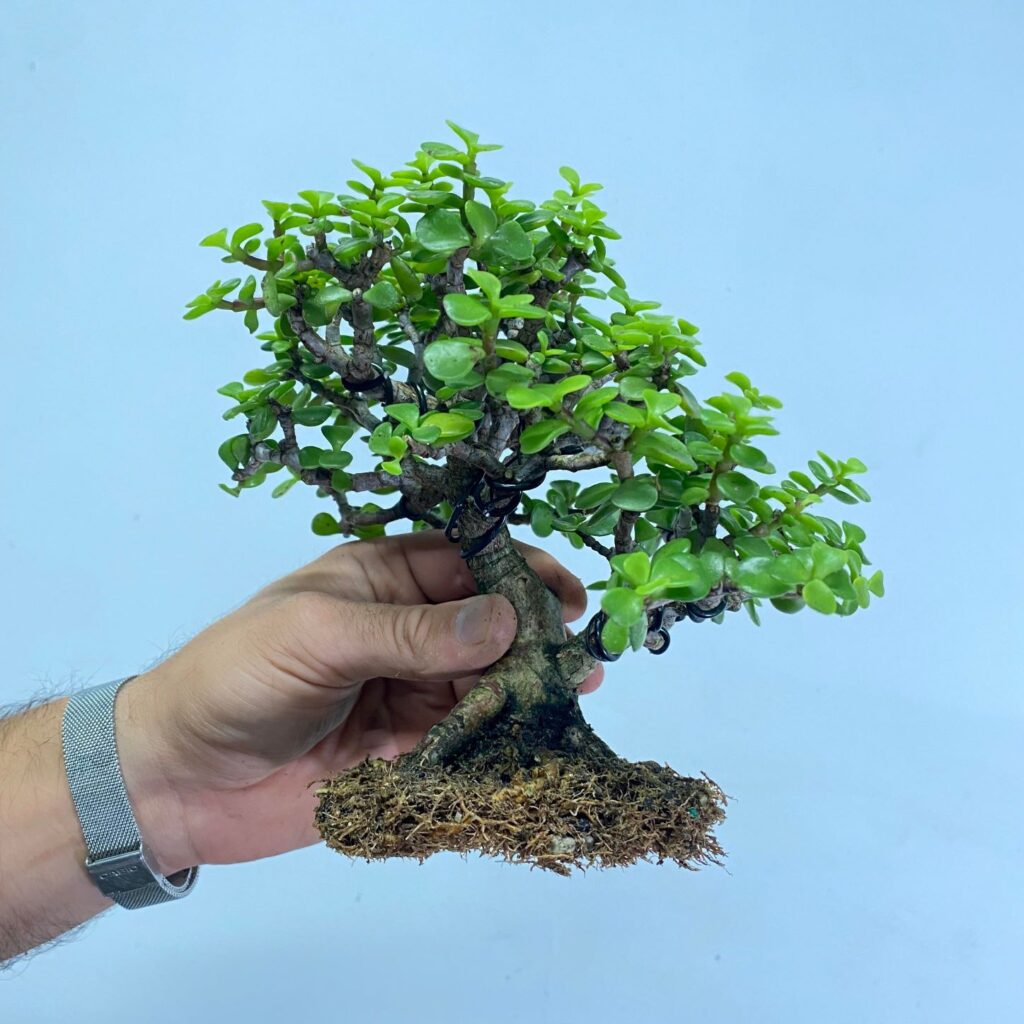
This is what the root system looks like after only removing the running roots and the lite matting. The result is a nicely trimmed up “shin”, or heart of the root system. P. afra could have many roots cut off or completely cut off, but I see no point in going any further with trimming. The tree is growing pretty well, and I don’t want to trim too much and send it into a juvenile-like growth spurt. To maintain its reduced leaf size and dense growth habit, I will take off only what is necessary to enable the tree to regrow a good number of more delicate feeder roots again. Mike visited my collection a short while ago and suggested a new front. I agree with him, so I’ll be trimming back some of the roots on one of the corners to make the change.
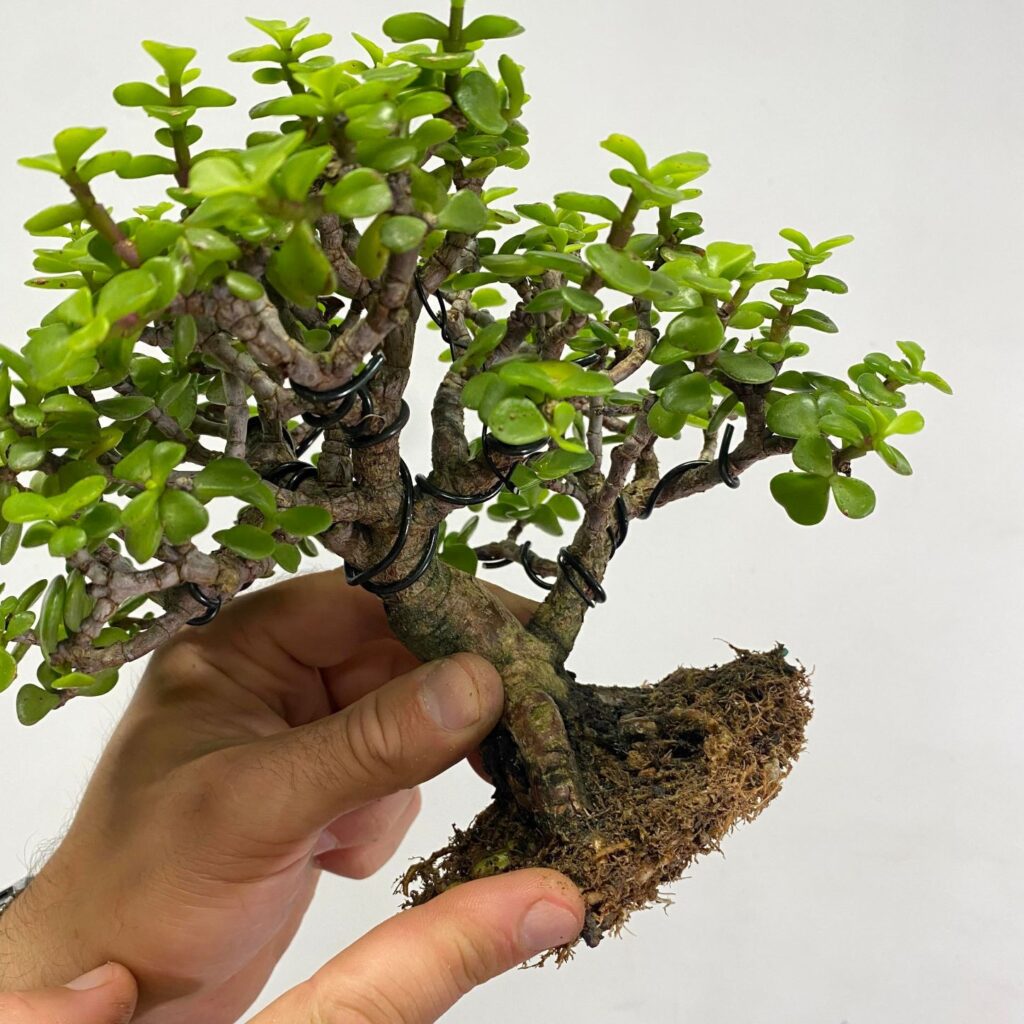
After cutting the roots on the one side back slightly, I can test out the new front I’m looking for.
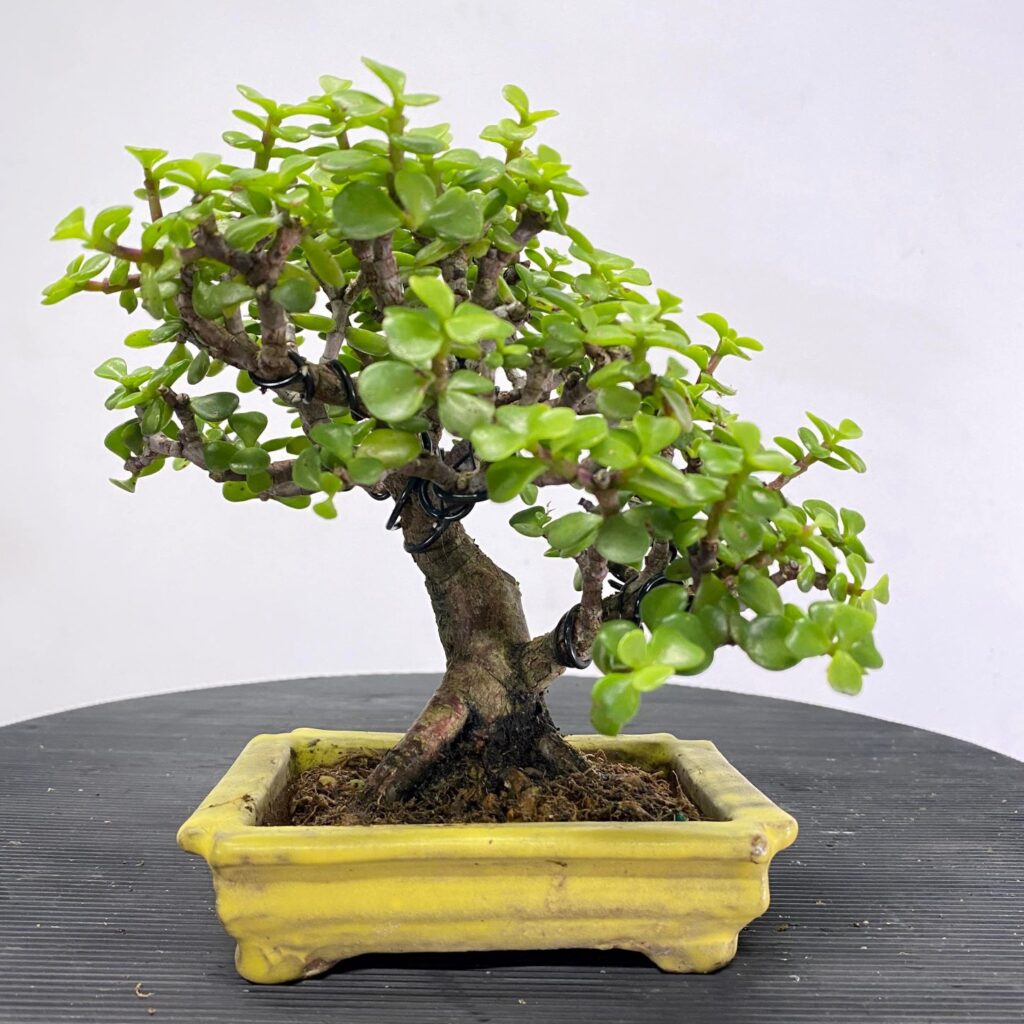
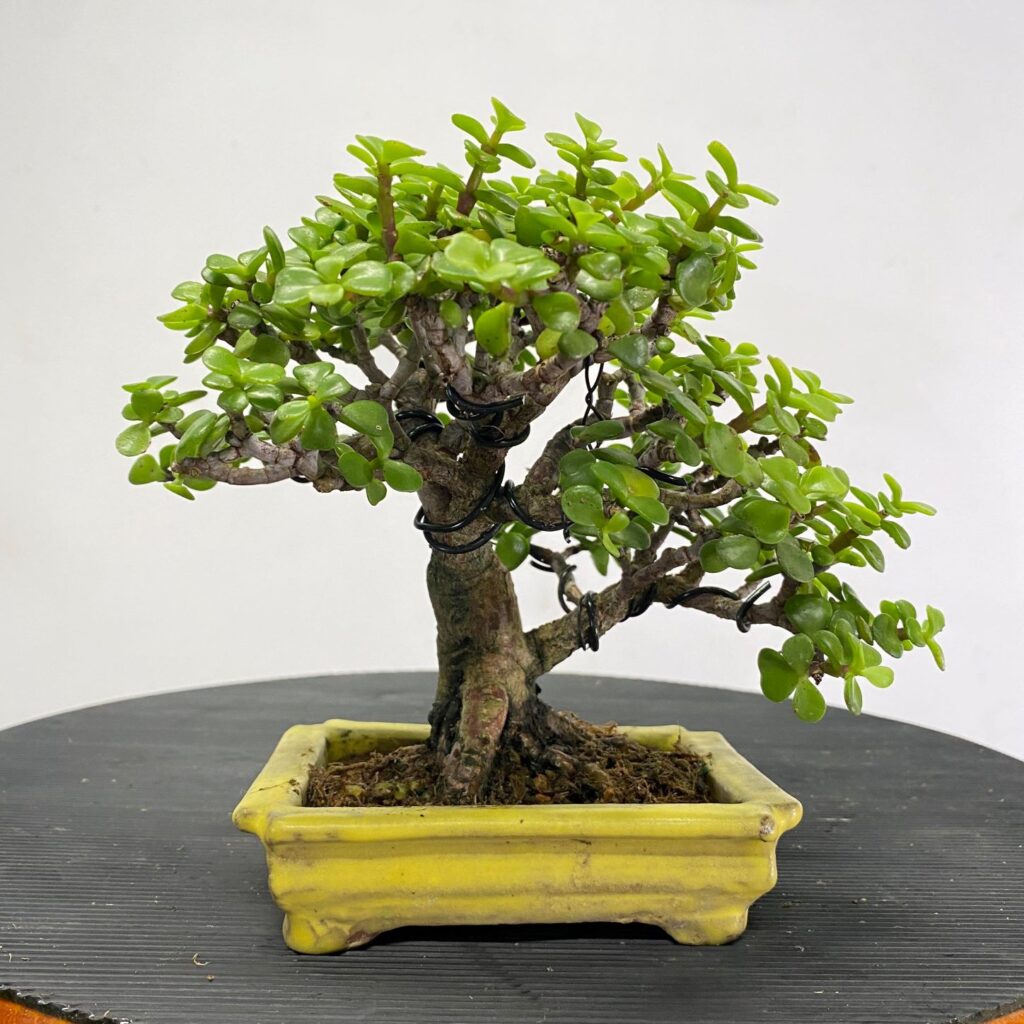
This slight rotation shows off the movement in the truck line and has a better placement of the branches. There is a large root-facing straightforward, but I don’t see a point in removing it. Removing the large root would cause an unsightly wound right in front of the tree. With little effort, P. afra can develop nice flaring nebari in a shallow container. In fact, the truck size has increased nicely since I started working with it two years ago.
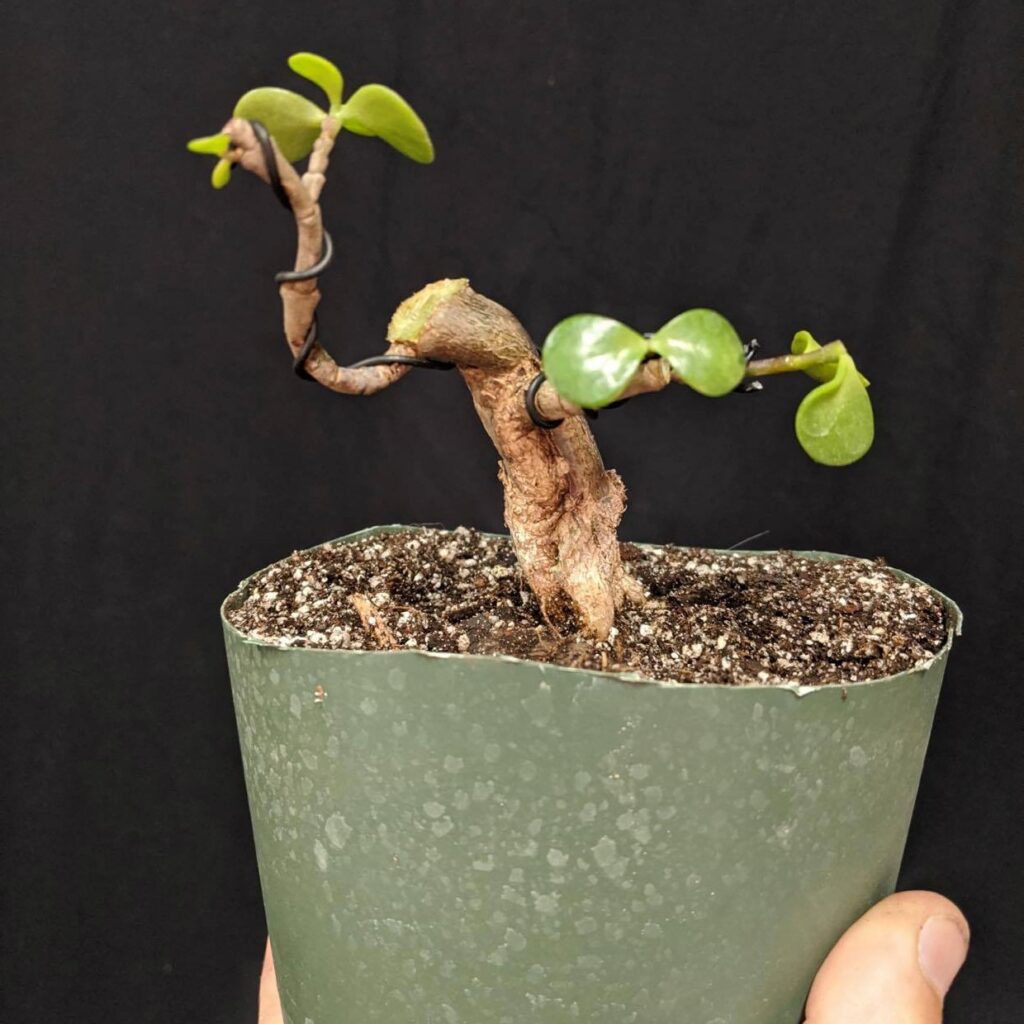
As you can see in the photo above, I have been able to grow a nice nebari in little time. He’s another interesting fact about this tree; I had to cut off all the roots and restart it as a cutting to get a better surface root spread.
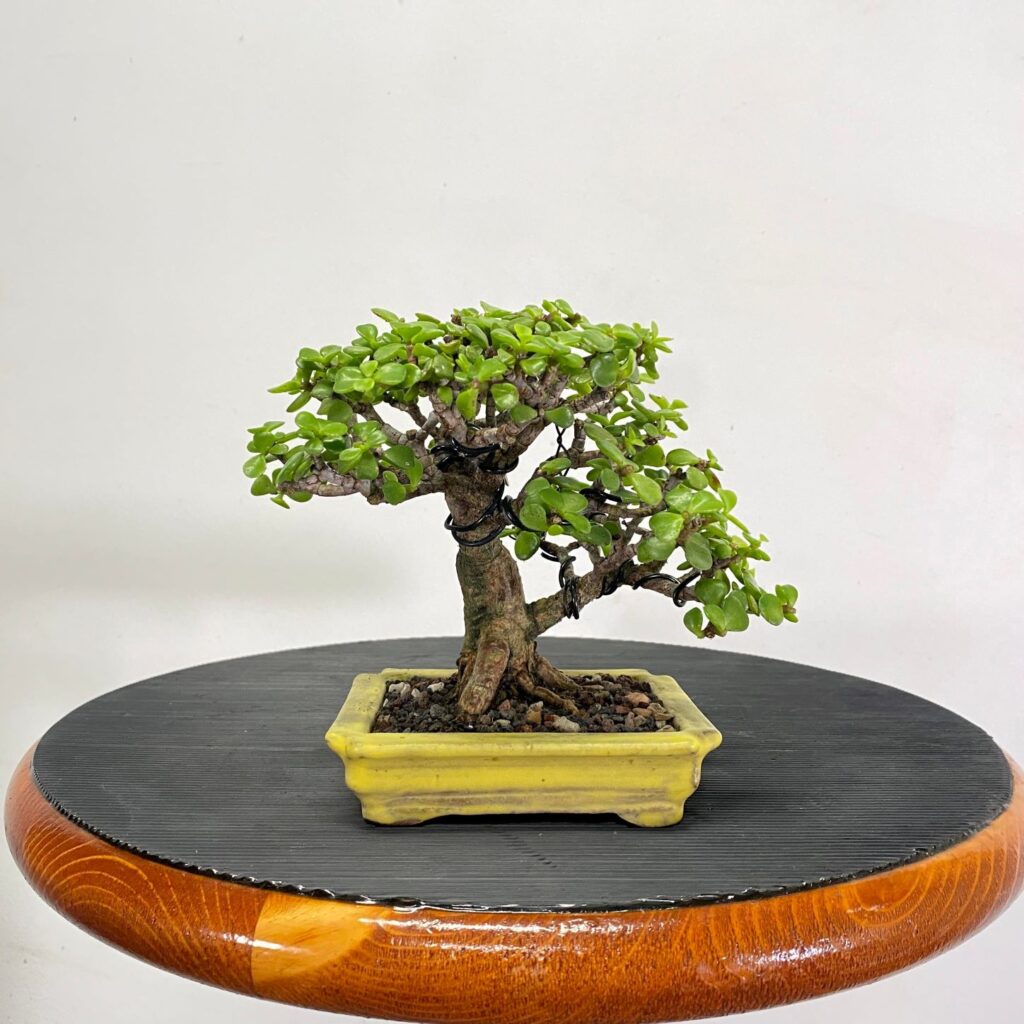
The tree is potted up properly, and the soil is top-dressed. The tree was also top trimmed back for silhouette and to further its ramification development.
This is a pretty easy-going tree, and I’ve had a lot of fun growing it out. I’ll need to start a few more from the other P. afra cuttings I took earlier this year. The future of this tree will be cut and grow to continue to reduce the leaves even further and get some more pad density.
My next entry will be on my favorite species for, bonsai. For those who know me pretty well, it should be obvious, but those who don’t are in for a surprise!
Until next time,
-Evan
